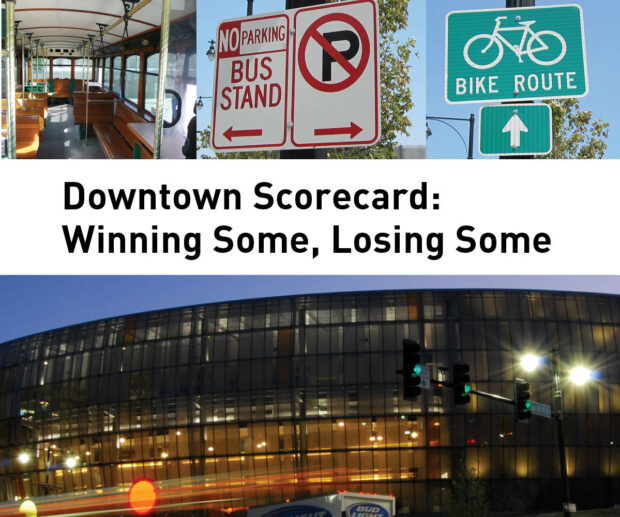HOME | ABOUT US | MEDIA KIT | CONTACT US | INQUIRE
HOME | ABOUT US | MEDIA KIT | CONTACT US | INQUIRE

On balance, Downtown is advancing toward its goals for transforming itself.
But the progress has been spotty. In sum: We still have work to do.
That’s one way to look at a scorecard of progress based on the ambitious action plan that Kansas City set for itself in March 2010, when the City Council codified a number of local improvement-district visions into the Greater Downtown Area Plan. It spelled out dozens of specific—and many not-so-specific—actions that could be taken to create a Downtown that was more pedestrian friendly, had better traffic flow, increased the population and employment Downtown, and promoted neighborhood development.
The outline set targets, year by year through 2013, then with a mid-range period of 4–8 years, then the long-term of 8-plus years, for 47 goals. It noted the primary responsibilities for each falling with the city or government agency, with the business community, with neighborhoods or with property owners themselves.
So how’s that working out? Well, in a few categories, the city has eaten the bear:
The first-year vision for improvements to the 12th Street Viaduct has been met, even if somewhat delayed, with recent work on that project.
The city has moved ahead on its commitment to bike-friendly streets, with signage and street painting designating initial routes.
To meet the need for making Downtown more family-friendly with additional educational assets, Crossroads Academy launched in 2012, providing new K-12 options.
Adoption of a Complete Streets policy is a done deal, with that action coming in 2012.
And earlier this year, work started on the Front Street Extension to connect the Kit Bond Bridge with Grand Avenue.
In some ways, those projects represented the low-hanging fruit of the plan’s first-year goals. Because with other targets,
particularly those with bigger price tags or those requiring broader community consensus, the bear bit back.
For example, item 1-A on that list was completion of a feasibility and funding study for a convention hotel. The city, which had already authorized a feasibility study in 2008, did engage consultants to look at both aspects in 2010. But little progress has been made since then in advancing a 1,000-room hotel, largely because of the city’s fiscal state.
A more recent barrier to that goal may have been the announcement that Chartwell Hotels would construct a 257-room hotel near the Kauffman Center for the Performing Arts. Some in the industry believe that may have altered the market dynamic enough to make a convention hotel unlikely.
And some projects that have been undertaken did yield results, but not the kind anticipated. That was the case with the rubber-tire trolley service envisioned as a way to connect Downtown with Midtown, the Country Club Plaza and south to Waldo. It was one of the earliest successes of the area plan in terms of execution—the service launched in the spring of 2010, just weeks after the plan itself was adopted.
But ridership never came close to projections. Kansas City Transportation Group, which operated the vehicles after securing a $200,000 loan from the city and $100,000 in tourism fund support, pulled the plug last spring and is still working to pay off the loan.
That experience, critics say, is a cautionary tale about how much faith we should place in the hands of planners with grand visions for remaking the city, but no real means of knowing how effective—or cost-effective—those plans will be. Many of those same voices say that the area plan should go farther to spread out the responsibility for achieving those goals. Government agencies, in most cases, the city itself, were identified as the primary responsible party for 39 of 47 initiatives, occasionally in tandem with businesses, neighborhoods or individual property owners. The business community was tasked with taking the lead in 10 of 38, property owners with six of 38, and neighborhoods with just two of 38.
Should those proportions have been adjusted then—or should they be modified now—to lessen the burden on a cash-strapped city?
It’s also important to recognize, plan advocates say, that while Downtown may be fixed inside an interstate loop, it remains a dynamic environment, where no change happens in a silo. An improvement that succeeds here could alter the priority list of other goals there; a project that under-performs could do the same.
Their larger point is, the work of improving Downtown isn’t a set of goals that, once met, can be checked off of a civic to-do list and forgotten—the need for improvement is never-ending. Kansas City lost that focus once, and witnessed decades of Downtown decline, which we’re still trying to address.